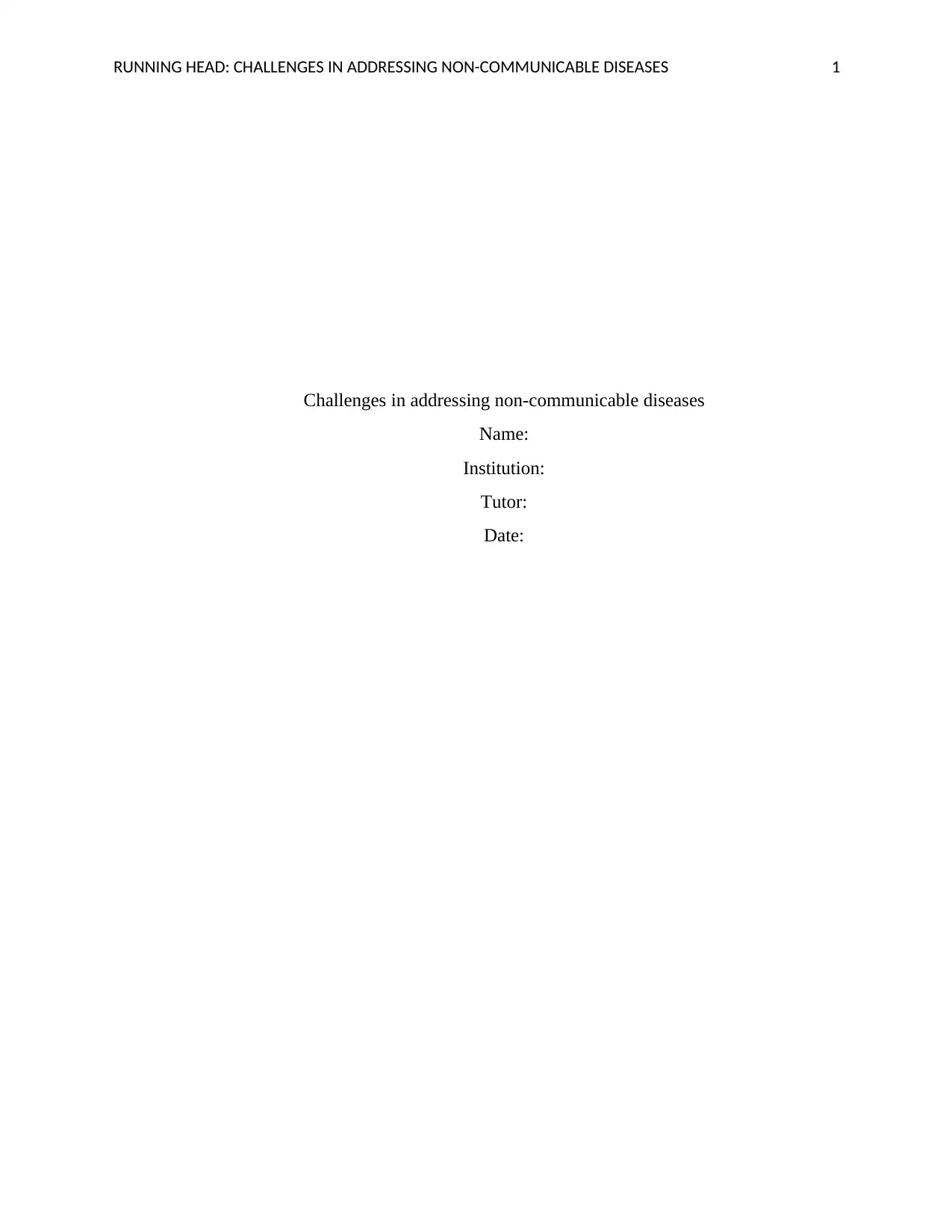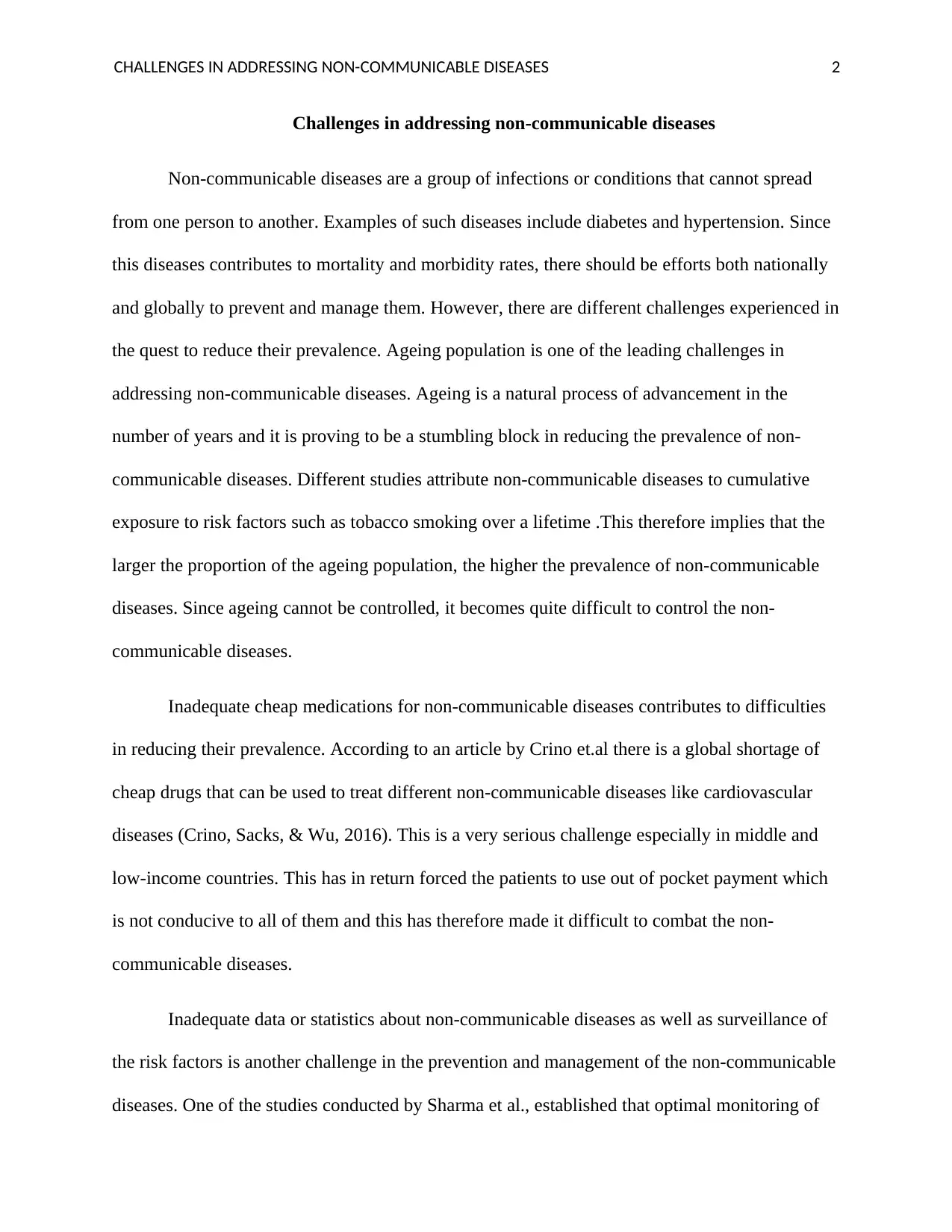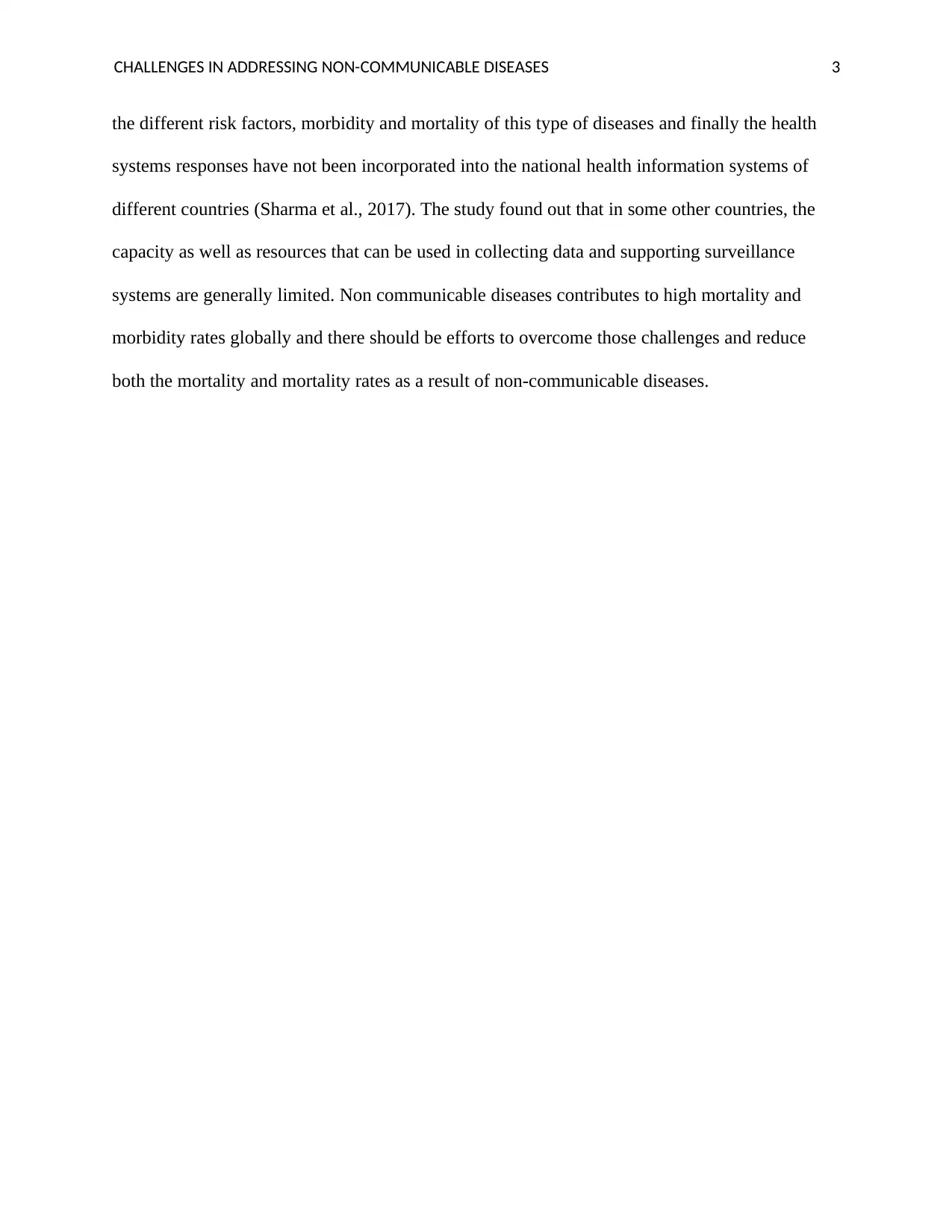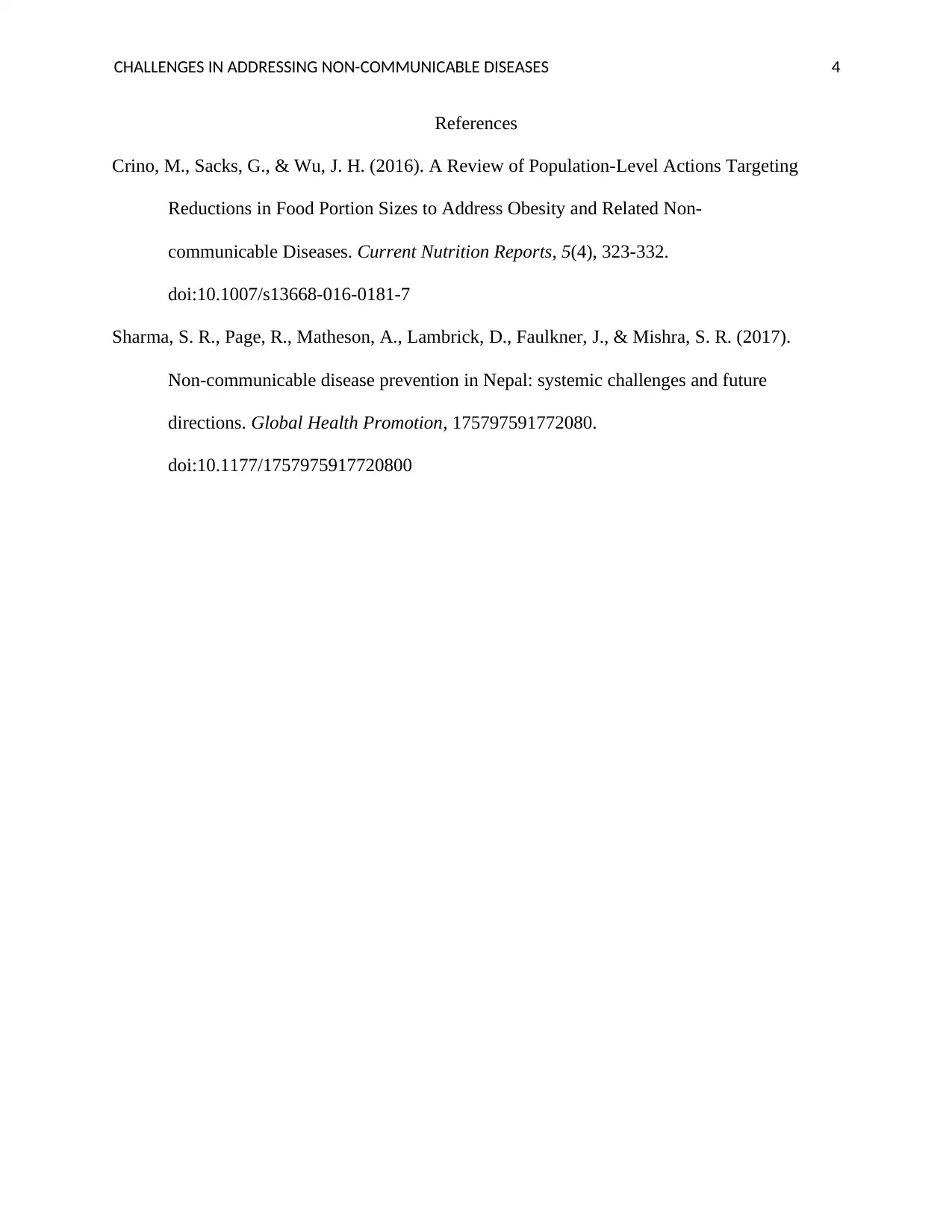EIT: MHS8.432 Challenges in Addressing Non-Communicable Diseases
VerifiedAdded on 2023/06/04
|4
|554
|92
Essay
AI Summary
This essay explores the significant challenges in addressing non-communicable diseases (NCDs), emphasizing the global impact on morbidity and mortality rates. It identifies key obstacles, including the aging population, which exacerbates NCD prevalence due to cumulative exposure to risk factors. The essay also highlights the critical issue of inadequate access to affordable medications, particularly in low and middle-income countries, forcing patients to rely on out-of-pocket payments. Furthermore, it addresses the challenge of limited data and surveillance systems, which hinders effective monitoring of risk factors, morbidity, mortality, and health system responses. The essay underscores the urgent need to overcome these challenges to reduce the global burden of NCDs and improve public health outcomes.
1 out of 4











![[object Object]](/_next/static/media/star-bottom.7253800d.svg)